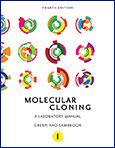
Photo from archive.org
Intracellular condensates formed through liquid-liquid phase separation (LLPS) primarily contain proteins and RNA. Recent evidence points to major contributions of RNA self-assembly in the formation of intracellular condensates. As the… Click to show full abstract
Intracellular condensates formed through liquid-liquid phase separation (LLPS) primarily contain proteins and RNA. Recent evidence points to major contributions of RNA self-assembly in the formation of intracellular condensates. As the majority of previous studies on LLPS have focused on protein biochemistry, effects of biological RNAs on LLPS remain largely unexplored. In this study, we investigate the effects of crowding, metal ions, and RNA structure on formation of RNA condensates lacking proteins. Using bacterial riboswitches as a model system, we first demonstrate that LLPS of RNA is promoted by molecular crowding, as evidenced by formation of RNA droplets in the presence of polyethylene glycol (PEG 8K). Crowders are not essential for LLPS, however. Elevated Mg2+ concentrations promote LLPS of specific riboswitches without PEG. Calculations identify key RNA structural and sequence elements that potentiate formation of PEG-free condensates; these calculations are corroborated by key wet-bench experiments. Based on this, we implement structure-guided design to generate condensates with novel functions including ligand binding. Finally, we show that RNA condensates help protect their RNA components from degradation by nucleases, suggesting potential biological roles for such higher-order RNA assemblies in controlling gene expression through RNA stability. By utilizing both natural and artificial RNAs, our study provides mechanistic insight into the contributions of intrinsic RNA properties and extrinsic environmental conditions to the formation and regulation of condensates comprised of RNAs.
Journal Title: RNA
Year Published: 2021
Link to full text (if available)
Share on Social Media: Sign Up to like & get
recommendations!